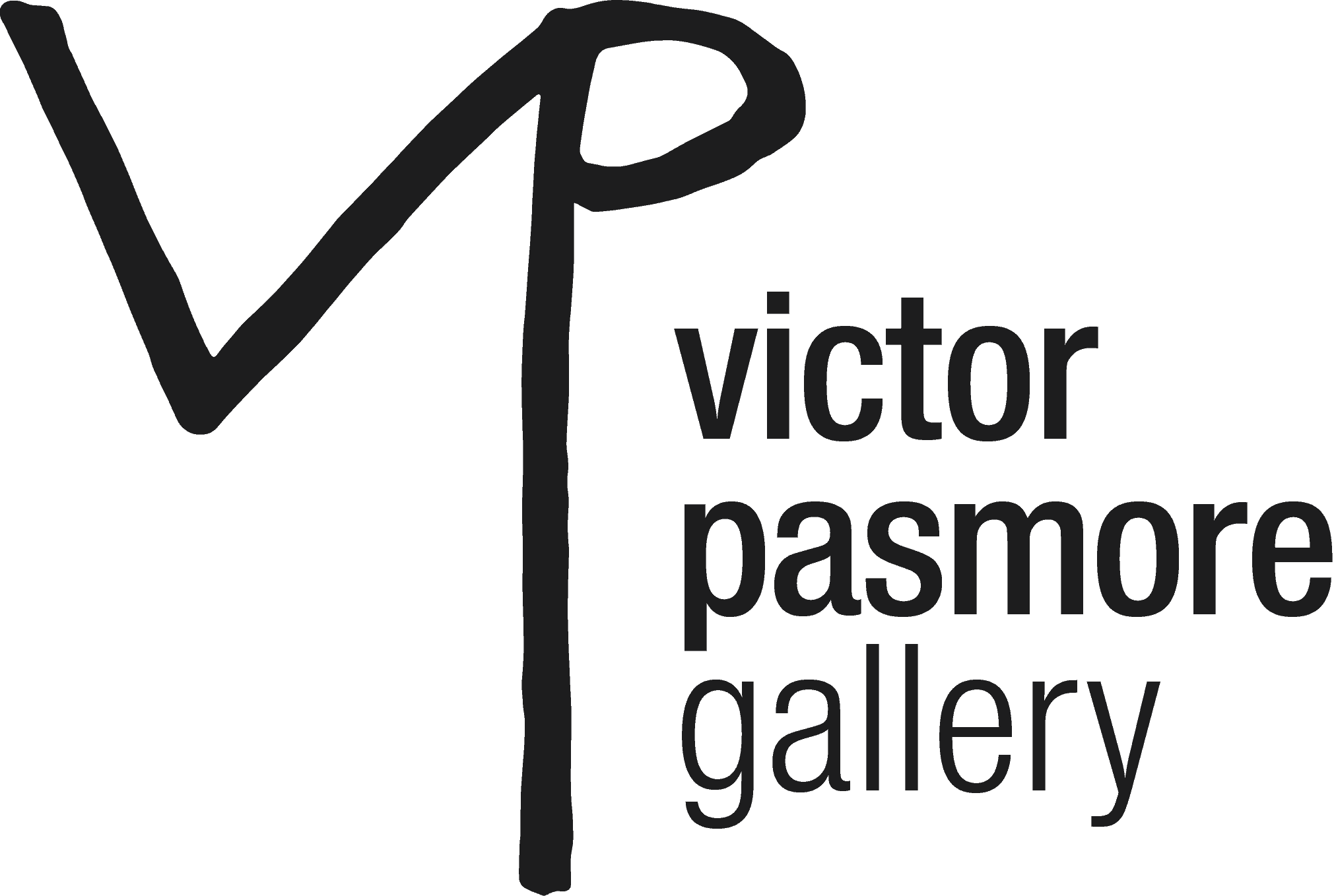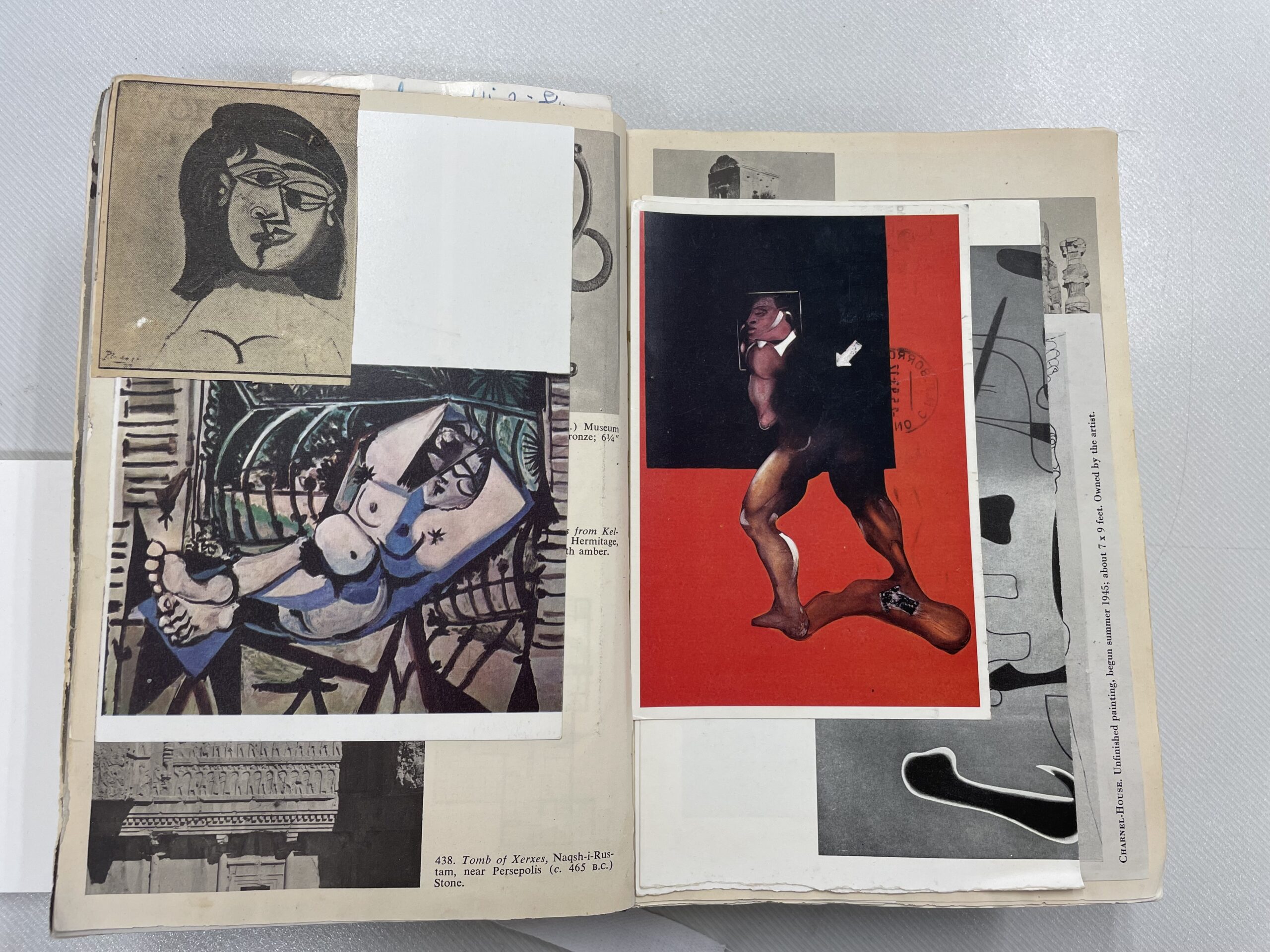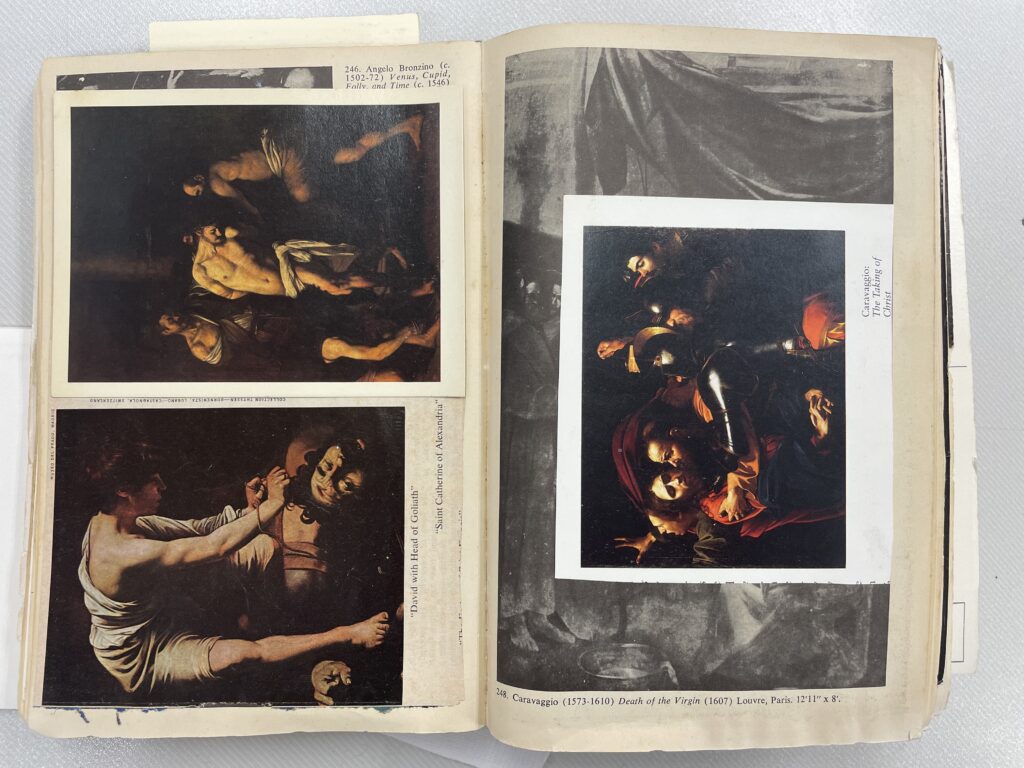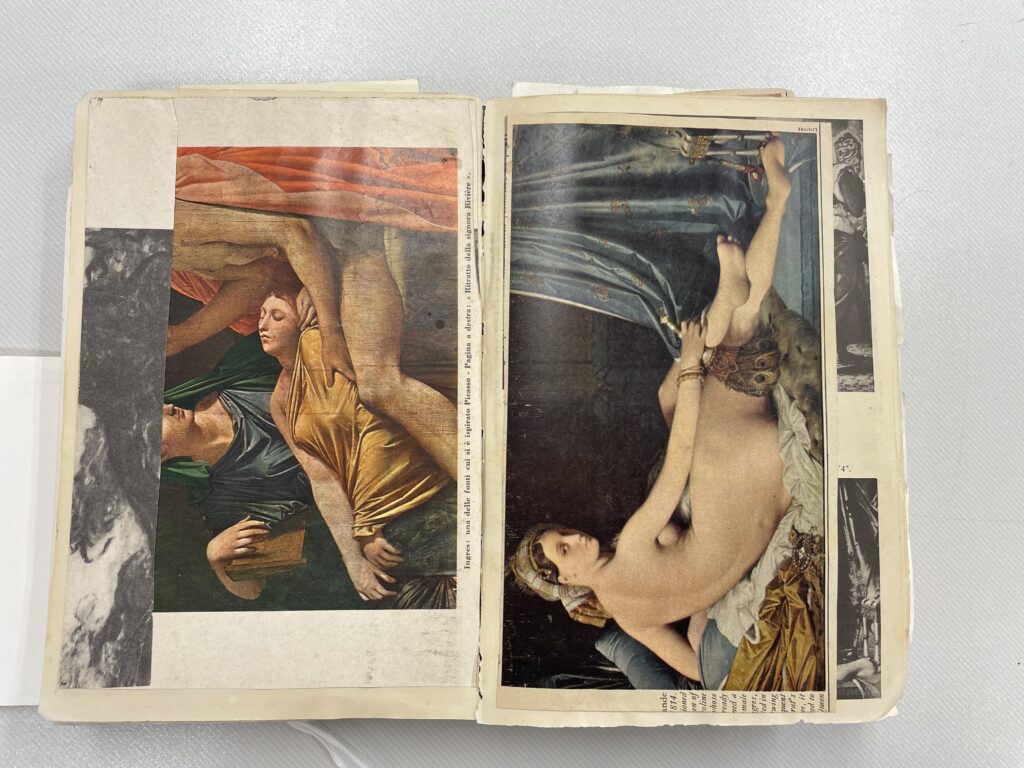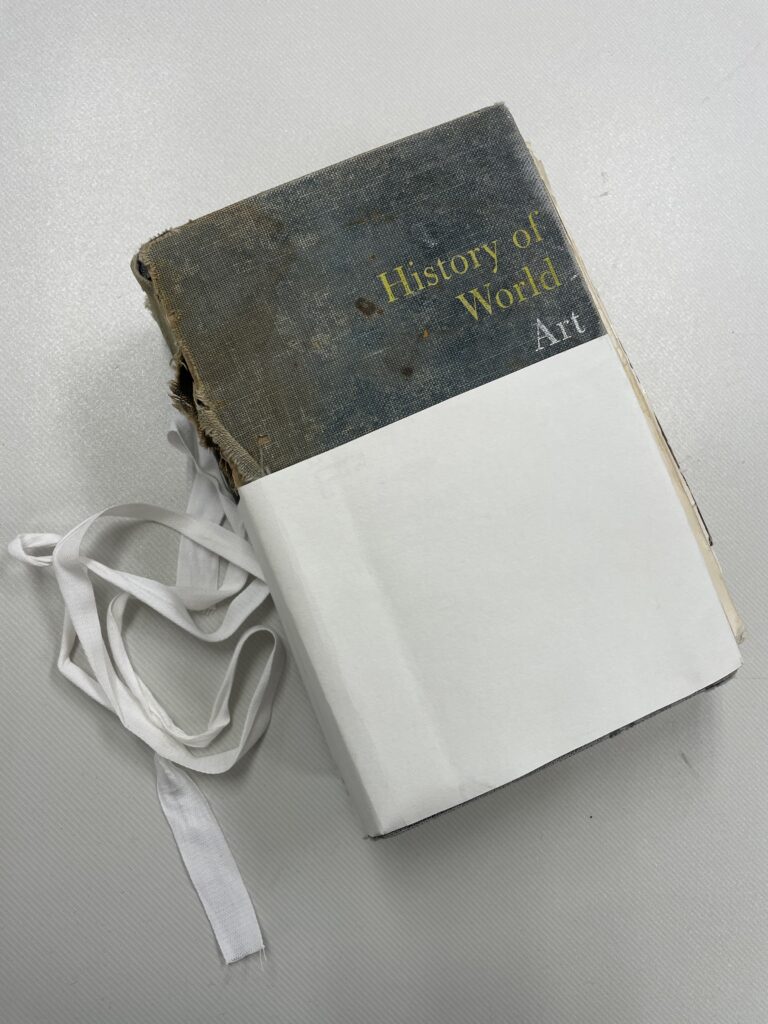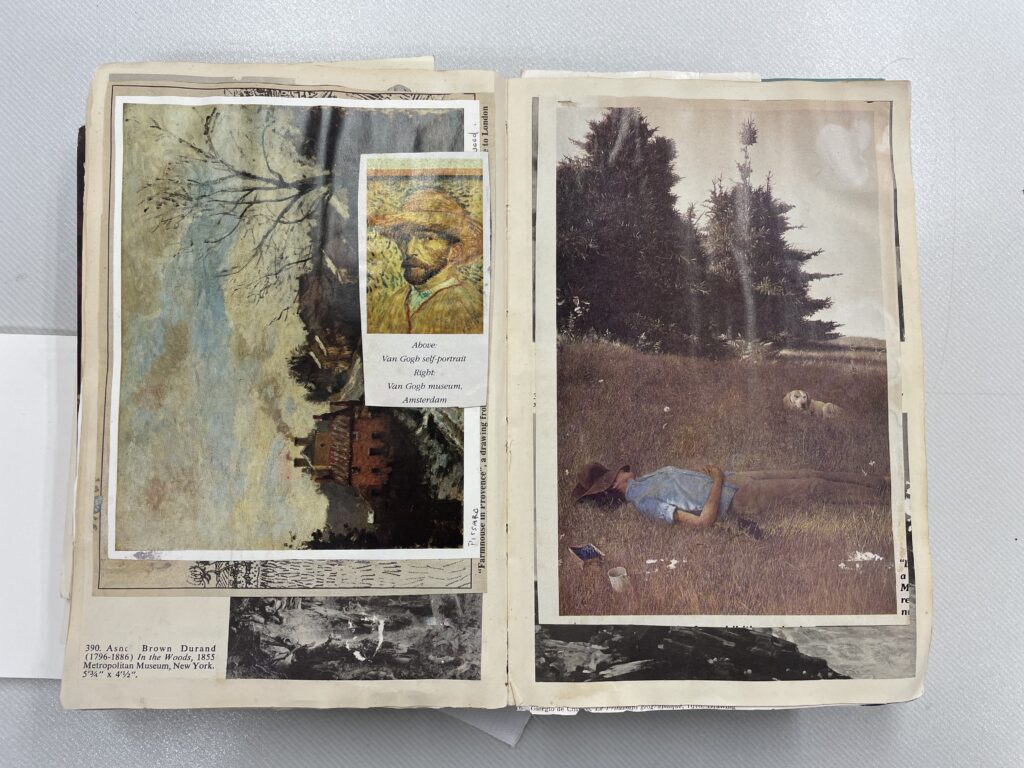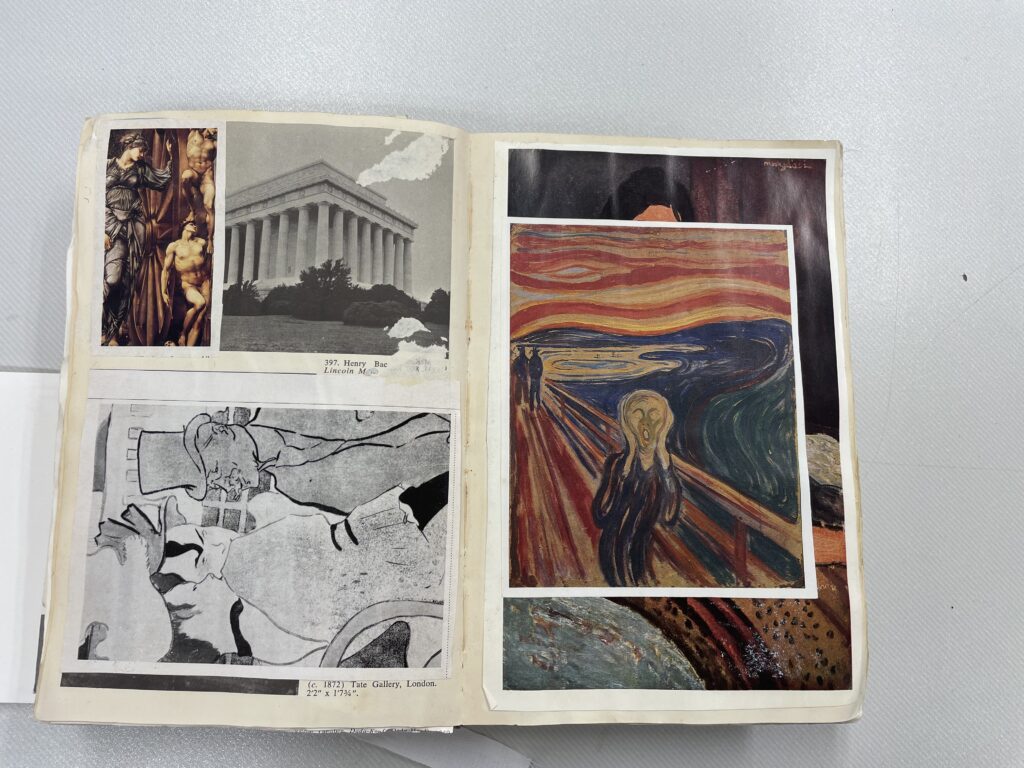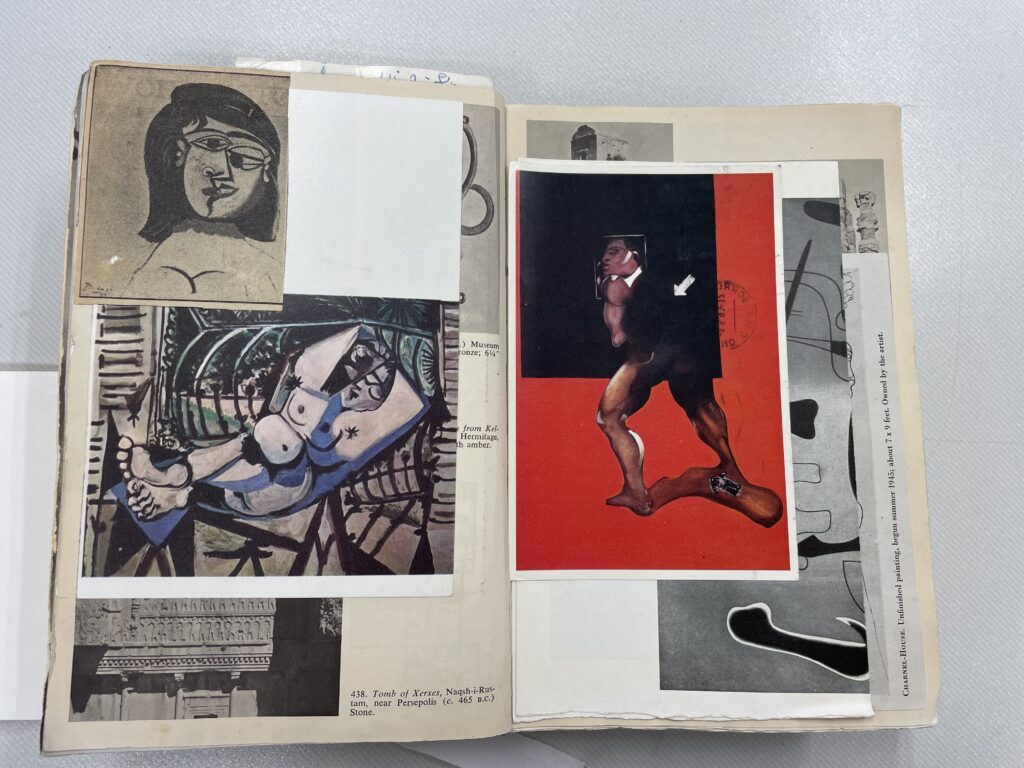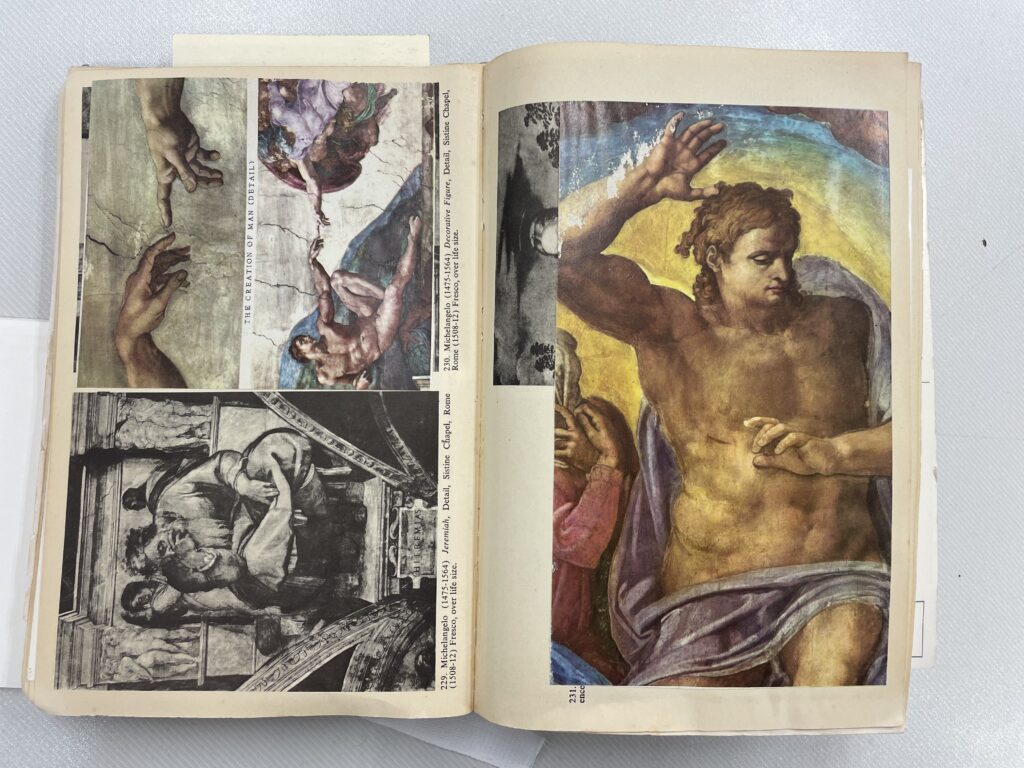HISTORY OF WORLD ART
Antonia Critien
Intrigued by what Pasmore may have had in his personal library, though armed already with a good idea of the staples, I visited the University Archives to have a look, and found two tightly packed cabinets of books on a wide range of subjects, confirming Pasmore to have been a deeply studious man of many interests.
History of World Art by Everard M. Upjohn, Paul S. Wingert and Jane Gaston Mahler, Oxford University Press, New York, 1949, stands out for its chunky size and severely weathered condition – a book well-handled, much referenced, and creatively revamped. In shock I found that Pasmore had glued on art related images throughout the book, covering both pictures and text of the publication. My first thought was that he was substituting the published black and white images with their coloured counterparts that he found in magazines over time, however it is rarely the same image he uses as a replacement. Other findings such as black and white newspaper cuttings also find their place adhered to this publication. The result is a personal scrapbook, roughly collated, feverishly enhanced. Once I overcame the initial feeling that the book was ‘ruined’, I began to see this as another of his artworks, such as his experiments with collage. I imagined the excitement of finding appropriate images to add to the book after leafing through numerous magazines and newspapers. The research world pre-internet – one that many of us have forgotten and more are not even familiar with! Oddly not all of these added images are context relevant, though it is sometimes impossible to see what lay beneath Pasmore’s additions. In some cases where more than one suitable image was found, he created a page within a page, whilst some of the others that he stuck first, are almost completely superimposed by newer and better finds. In its final state it is more of an art project than a history book, yet it retains the original scope of offering an art history overview though not necessarily a strict timeline. The importance here lies with the image rather than the text. It is also a labour of love. Love of art from prehistory to contemporary, from objects to paintings – all of it valid for a better understanding of one’s own artistic journey.
In 2018, Victor Pasmore’s children, John Henry Pasmore and Mary Ellen Nice, donated over 500 books and exhibition catalogues to the University of Malta, Archives and Rare Books Department.
The Victor Pasmore Gallery is open to visitors at APS House, 274 St Paul Street, Valletta.
